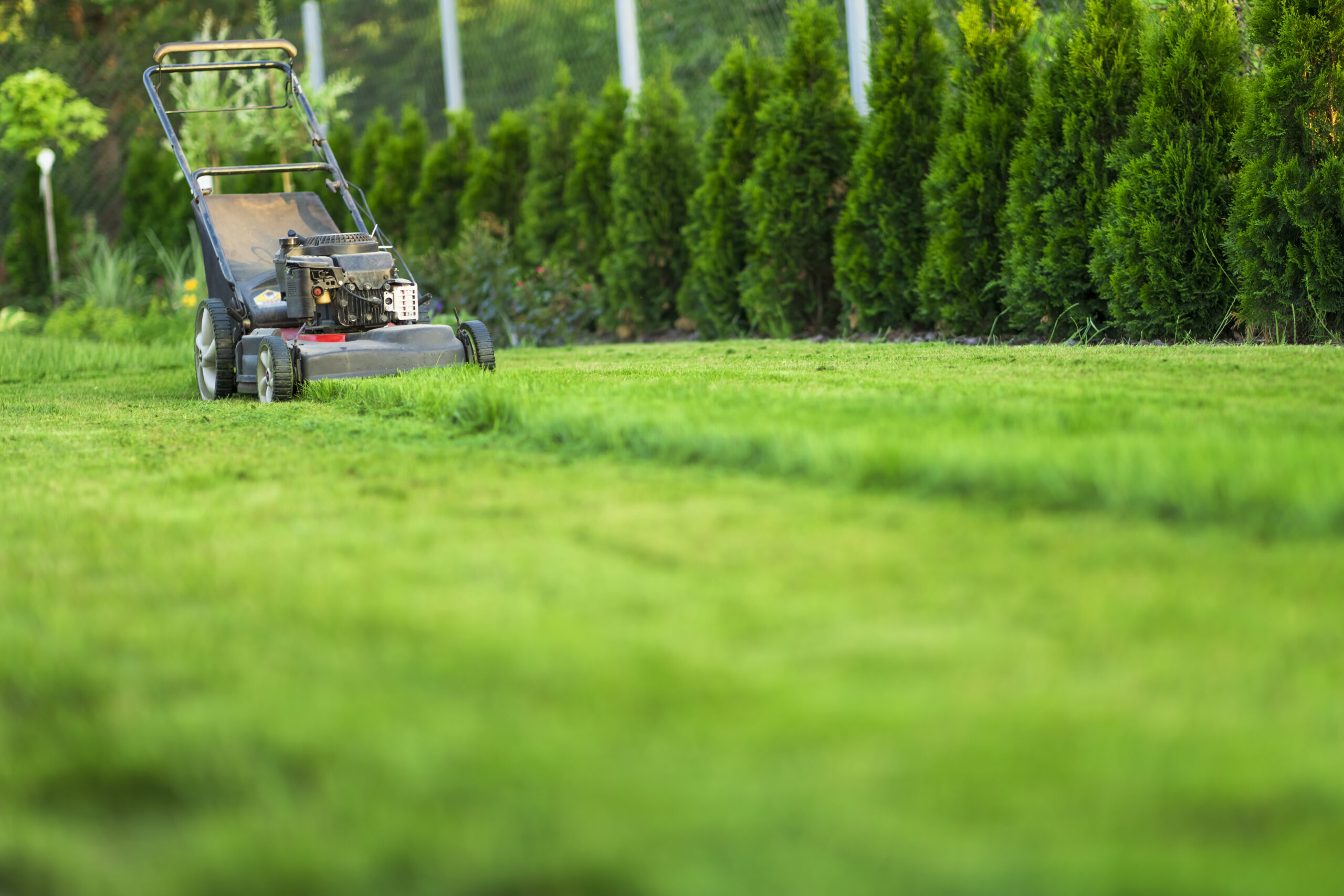Lawn grubs can wreck your grass faster than you think, leaving behind brown patches that just won't heal. If you've noticed your lawn looking tired or uneven, chances are you're dealing with these hidden pests. Knowing how to identify grubs early and the signs of grubs in lawn can save you a lot of trouble. We'll walk you through simple grub treatment steps that really work. Keep reading to protect your yard and prevent grub infestation before it's too late.
Identifying Lawn Grubs
Spotting lawn grubs early can save your grass from major damage. These pests work underground, making them tricky to catch before they cause visible harm to your yard.
Recognizing Grub Damage
Brown patches that appear suddenly in your otherwise green lawn are the first red flag. These spots feel spongy when you walk on them, unlike dry patches from lack of water.
If you can easily pull up sections of grass like a loose carpet, grubs have likely eaten through the root system. The damaged areas form irregular shapes and grow larger over time, especially during late summer and early fall.
Another telling sign is increased animal activity. Raccoons, skunks, and birds will dig into your lawn hunting for these protein-rich snacks. Small holes and torn-up grass sections often mean animals are searching for grubs in your yard.
Water won't fix these damaged areas. Even with extra watering, grub-damaged grass continues to wilt and die because the roots are gone. This key difference helps separate grub issues from other lawn problems.
How to Identify Grubs
Lawn grubs are small, C-shaped creatures with cream-colored bodies and brown heads. They measure about ¼ to 1 inch long, depending on their stage of growth.
To check for grubs, cut a 1-square-foot section of turf about 2-4 inches deep in a damaged area. Peel back the grass and look through the soil. Count how many grubs you find - 5-10 grubs per square foot indicates a problem that needs treatment.
Grubs are the larvae of beetles, most commonly Japanese beetles, June beetles, or European chafers. Each type looks slightly different, but all cause similar damage. Japanese beetle grubs have a distinctive pattern of tiny hairs on their rear ends forming a "V" shape.
Most homeowners spot grubs during spring or fall lawn work. The best time to look is when they're feeding near the surface - typically early fall and spring. During winter and mid-summer, they burrow deeper, making detection harder.
Signs of Grubs in Lawn
Your grass will tell you when grubs are feeding below. Watch for grass that turns yellow then brown during late summer, even with proper watering and care.
The soil beneath grub-damaged areas feels soft and spongy because the root system is gone. Push a screwdriver into these areas - if it slides in with almost no resistance, grubs might be the cause. In severe cases, you can roll up the dead turf like a carpet since nothing anchors it to the soil.
Birds, especially crows and starlings, pecking repeatedly in the same lawn areas suggest grubs below. Similarly, moles, skunks, and raccoons dig small holes or tear up patches of grass hunting for these tasty morsels. Their sudden interest in your yard often means grubs have moved in.
Timing matters too. Grub damage typically appears in late summer through fall, and again in spring. If your lawn showed no problems during spring but develops dead patches by August or September, grubs are likely the culprit. This pattern matches their feeding cycle as described by lawn care experts.
When to Treat Lawn Grubs
Timing is everything when fighting lawn grubs. The best window for treatment falls between mid-summer and early fall when grubs are young, small, and near the soil surface.
July through September offers your best chance for success. During this period, newly hatched grubs feed actively near the grass roots and haven't yet developed resistance to treatments. They're smaller, more vulnerable, and easier to kill with less chemical input.
Spring treatments work less effectively because the grubs are larger and tougher. By spring, they've already done most of their damage from the previous year. While you can still treat them, you'll need stronger products and may see less impressive results.
The actual number of grubs matters too. Finding 5-10 grubs per square foot warrants treatment. Fewer than that might not cause noticeable damage, while more indicates a severe infestation needing immediate attention.
Weather conditions affect treatment success. Apply products when soil is moist but not saturated, and when rain is expected within 24 hours after application. This helps move the treatment down to where grubs feed without washing it away completely.
Treating Grub Infestations
Once you've confirmed grubs in your lawn, quick action prevents further damage. The right treatment approach depends on the severity of your infestation and your preferences for chemical versus natural solutions.
Effective Grub Treatment Methods
Chemical grub killers offer fast, reliable results when applied correctly. Products containing carbaryl, imidacloprid, or chlorantraniliprole target grubs at different life stages.
Preventive treatments work best when applied before eggs hatch in early summer. These products create a barrier that kills newly hatched grubs before they damage roots. Apply them in May or June, water them in thoroughly, and they'll protect your lawn for months.
Curative treatments tackle existing infestations. These fast-acting solutions kill grubs within days but don't last as long as preventive options. Apply them when you spot damage and water the lawn immediately after application to help the product reach the soil where grubs feed.
Proper application makes a huge difference. Always follow label instructions for the correct amount per square foot. Too little won't kill the grubs, while too much wastes money and may harm beneficial insects. Water the lawn after application with at least ½ inch of water to move the product into the soil.
For severe infestations, professional pest management services may offer the most effective solution. They have access to commercial-grade products and equipment that ensure even coverage and maximum effectiveness.
Safe and Natural Solutions
Natural grub control methods work well for light to moderate infestations without harsh chemicals. These options protect pets, children, and beneficial insects in your yard.
Beneficial nematodes top the list of natural solutions. These microscopic organisms seek out and kill grubs by entering their bodies and releasing bacteria. Apply them when soil temperatures reach 60°F, usually in late spring or early fall. Water before and after application since nematodes need moist conditions to move through soil.
Milky spore provides long-term Japanese beetle grub control. This natural bacteria only affects Japanese beetle grubs, leaving other insects unharmed. While it takes 1-3 years to build up in soil, it can provide protection for 10-15 years afterward. Apply it in early fall when grubs actively feed.
Proper lawn maintenance helps fight grubs naturally. Keep grass at 3-4 inches tall - this encourages deeper roots that better withstand grub damage. Water deeply but infrequently to promote strong root growth without creating the moist conditions grubs love.
Birds serve as natural grub predators. Attract them with bird baths and native plants. Some homeowners report success with introducing guinea fowl or chickens to eat grubs, though this option works better in rural settings.
Preventing Future Infestations
Smart lawn care practices keep grubs from returning year after year. Prevention costs less time and money than treating established infestations.
Prevent Grub Infestation Tips
Break the beetle breeding cycle to stop grubs before they start. Adult beetles lay eggs in short, well-watered grass during summer months.
Change your summer watering schedule during peak beetle season (usually June-July). Let your lawn dry out slightly between waterings during these weeks. Beetle mothers avoid laying eggs in dry soil, preferring moist conditions for their offspring.
Consider preventive treatments if you've had grub problems in the past. Apply them in early summer before eggs hatch. One application protects your lawn through the entire season when timed correctly.
Plant grub-resistant grass varieties like tall fescues or perennial ryegrass. These types have deeper, more extensive root systems that better withstand light grub feeding. They also tend to need less water, making them less attractive to egg-laying beetles.
Remove yard debris promptly, especially in fall. Beetles overwinter in leaf piles, compost heaps, and garden debris. Cleaning these areas reduces places for adult beetles to hide.
Monitor for adult beetles in summer. Japanese beetles, June bugs, and chafers indicate potential grub problems later. If you spot many adults, prepare to apply preventive treatments before eggs hatch into hungry grubs.
Maintaining a Healthy Lawn
A thick, healthy lawn withstands minor grub damage without showing stress. Strong grass outgrows and recovers from light infestations naturally.
Feed your lawn properly with balanced fertilizer. Apply it in spring and fall rather than summer. Summer fertilizing creates tender growth that attracts egg-laying beetles and gives grubs more to eat.
Mow high at 3-4 inches. Taller grass develops deeper roots that better survive grub feeding. The shade from taller grass also keeps soil cooler and less appealing to egg-laying beetles in summer.
Aerate compacted soil each year. This improves drainage and root growth while making soil less hospitable to grubs. Fall aeration works best, breaking up any developing grub populations while helping grass recover from summer stress.
Overseed thin areas every fall with grub-resistant grass types. Thick turf crowds out weeds and recovers faster from any grub damage. Mix different grass varieties for better disease and pest resistance.
Water deeply but less often. This encourages grass roots to grow deeper, making them more grub-resistant. Early morning watering (5-9 am) reduces disease issues while giving grass time to dry before evening.
Test your soil every 2-3 years and correct pH if needed. Most grasses prefer slightly acidic soil (6.0-7.0 pH). Proper pH helps grass absorb nutrients better, creating stronger plants that resist pests naturally.
Need Expert Lawn Care Assistance?
For expert assistance with grub control and maintaining a lush, healthy lawn, visit Mean Green Lawn and Landscape. Our team offers personalized lawn care solutions tailored to your yard's needs, ensuring those pesky grubs are kept at bay. Contact us today for a consultation!





